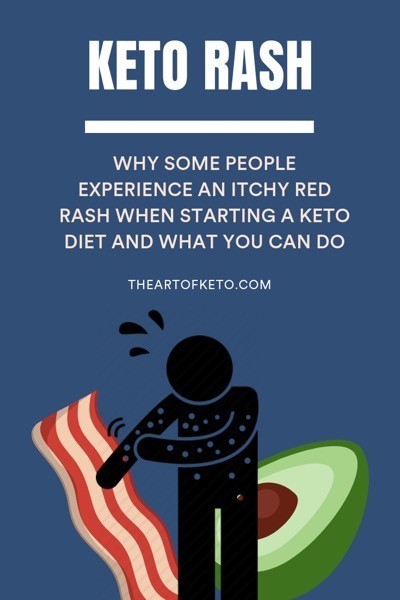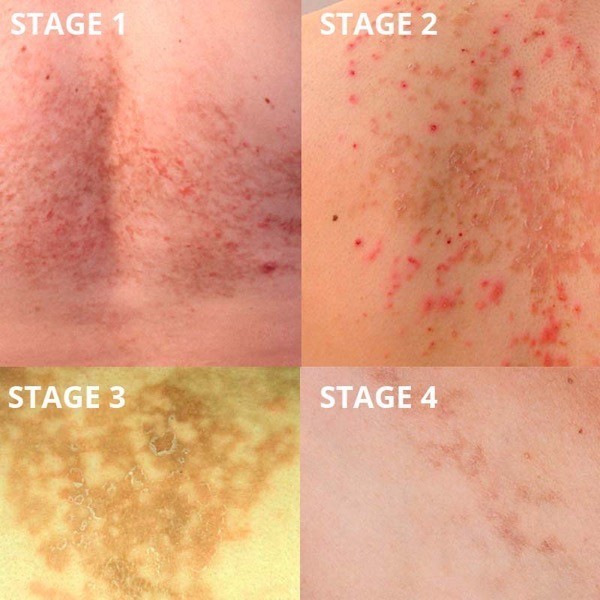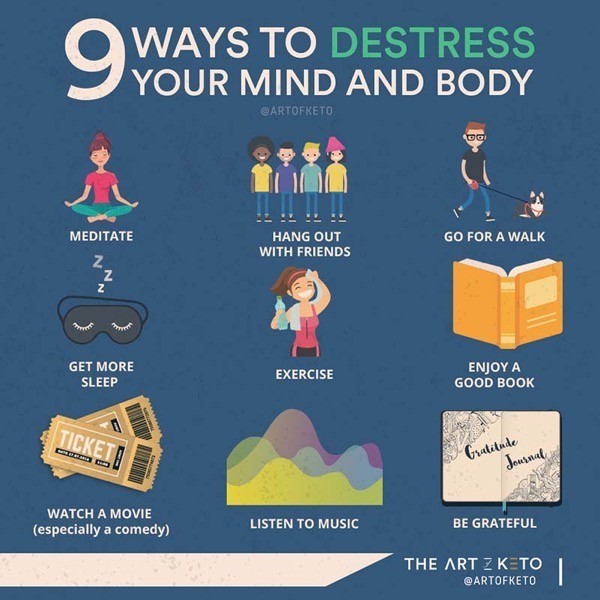One thing I wondered about when I first started the ketogenic diet was why certain parts of my body seemed to break out in what appeared to look like hives, except it didn’t itch. 1
I’ll admit, I panicked slightly, but after digging up on the research I learned that keto rash was one of the common, though unpleasant, side effects of a ketogenic diet.
What is keto rash?
Keto rash also known as prurigo pigmentosa is a rare inflammatory disease that looks similar to eczema and dermatitis.
It is a red itchy rash that typically shows up on areas obstructed by clothing such as your neck, back, chest, shoulders, torso, armpit areas.
For people who experience keto rash, it will usually appear within a few days to two weeks of starting the keto diet or following a keto meal plan.
What causes keto rash?
The actual cause of keto rash is unknown, but we can speculate what the cause is based on anecdotal evidence.
- One such cause may be excessive ketone formation as showed by when people developed the rash.
- Nutrient deficiencies of various vitamins and minerals resulting from excluding many foods.
- Since keto rash forms in areas where sweat commonly accumulates, maybe ketones themselves irritate the skin. This can be a problem for those who may suffer from night sweats on keto.. This can be a problem for those who may suffer from night sweats on keto.. 2
- Since the majority of toxins are stored in our fat cells, another theory is the release of toxins 3 due to burning fat.
- Certain bacteria and yeast feed off of carbohydrates, removing carbs can cause aggravation and lead to rashes.
A few speculative anecdotes based on when keto rash appears:
- It occurs early when people first enter ketosis, especially when weight loss is most rapid.
- Keto rash has been known to occur in people with uncontrolled diabetes.
- During prolonged, intermittent fasting, or excessive fasting.
What does keto rash look like?
What keto rash looks like can vary from person to person in location and severity. As for myself, it didn’t get too bad nor did it itch.
You will notice itchy, elevated red skin lesions on areas such as the back, chest, sides of the body, neck, and armpits. The rash will often be symmetrical and appear within a few days to weeks of beginning a ketogenic diet for most.
You might associate the visual appearance of keto rash to more common skin conditions like dermatitis or eczema.
Symptoms of keto rash come in four stages.
- Light pink, mildly itchy raised bumps.
- The bumps turn into clusters of papules that may be filled with a liquid or pus. This is when people typically experience more itchiness. 4
- The rash will become brown and crusty as the rash resolves, almost like a scab.
- Last, as the scabs go away, you are left with a net-like pattern of dark spots that might remain once the rash is healed.
Keto rash images
I sourced these images from the Journal of the European Academy of Dermatology and Venereology
This keto rash picture displays the four stages of keto rash
Looks scary, but is keto rash dangerous?
You might have to deal with the annoyance and embarrassment of having an ugly rash.
That said, while keto rash does look unpleasing and sounds uncomfortable, the rash itself isn’t dangerous.
How long does keto rash last?
How long the rash will stay varies from person to person, but it can last two weeks to a few months. For myself, the worst parts of it (stage 1 and stage 2) lasted two weeks.
It’s usually the latter stages that last the longest. You can think of it like a bad zit on your face that once healed still leaves a dark mark that stays around.
How to get rid of keto rash
Since there is no concrete evidence to support why keto rash happens in the first place, there is no one absolute keto rash cure or treatment.
With that, there are few things that may ease the symptoms based on good old user experience and educated methods.
Be patient
Keto rash goes away on its own with no intervention after a few weeks. Again, it usually goes away after a week or two from my experience.
Eat some more carbs!
Yup, you read that correctly.
Add back in just enough carbs to kick yourself out of ketosis, not an excuse to a free for all carb binge.
If your goal is to lose weight… Get it in your head that you don’t have to be in ketosis to lose weight as long as you’re still in a caloric deficit. 5
You can test if being in ketosis is triggering the rash by increasing carb intake about 50-100 grams to get out of ketosis. If the rash beings to resolve itself, lower your carbs back down and assess if the rash returns.
If the rash doesn’t return, then keep on trucking!
If the rash returns, maybe try a more low-to-moderate carbohydrate approach. Perhaps a full-blown ketogenic diet may be out of the question for you.
If you have your heart set on living a ketogenic lifestyle, there may still be hope. There is a reason to believe having high levels of ketones (deep ketosis) causes the rash to appear.
While you don’t have to abandon a ketogenic diet altogether, you may want to try levels of increased carbs and protein. You want your carbs to be low enough to maintain ketosis without having blood ketone levels elevate to high.
Stop fasting
We have known ketogenic diets to reduce hunger and induce satiety, which makes it such a great diet for fat loss.
People who follow ketogenic lifestyles inevitably begin toying with the idea of fasting, whether intermittent or prolonged. I sometimes wonder if people fast for the health benefits or they’ve now developed eating disorders and are just desperate to lose weight as quick as possible.
Keto rash has been correlated with fasting, so ease up on that.
Wear lose-fitted clothing.
Keto rash appears on areas that tend to be covered by clothing where sweat might build up.
If it’s the ketones in the sweat that are irritating your skin, avoid tight fitted clothing, especially during exercise.
De-stress
Sometimes skin conditions can be triggered by stressful situations. Dieting itself is a stress, combine that with starting a new diet and your bodies perception of stress is amplified.
Many people who have experienced keto rash often reported that it intensified during periods of high stress which can compromise your immune system.
Try some of these destressing suggestions
Elimination diet
Did you do a complete overhaul on your diet and introduce foods you never used to eat?
The following keto-friendly foods trigger allergies in certain individuals:
- Dairy (yogurt, cheese)
- Eggs
- Peanuts
- Tree nuts (macadamia nuts, almonds)
- Shellfish (oysters, crabs, mussels)
You can even try the ultimate elimination diet and go carnivore for a brief period while adding back in foods to see if they trigger a reaction.
Address deficiencies
Done correctly, keto is one of the most nutrient dense diets you can be on. Some people also think keto is just eating bacon and eggs.
Make sure you are varying your food sources and getting a wide variety of vegetables and fat sources like fish oil in your diet. For a more complete list of keto-friendly foods, you can check out my keto foods list.
Last resort, consider antibiotics
There may be therapeutic reasons you need to stay in deep ketosis or the symptoms don’t seem to resolve on its own. Talk to your doctor about the potential risks and benefits of taking medication to clear up your rash.
While this doesn’t address the root cause of the rash, it may help ease your current symptoms.
Keto rash take home
Keto rash affects more than people on ketogenic diets. There are reports of the same rash by people who’ve been fasting and those with uncontrolled diabetes.
What exactly causes keto rash is still speculative at best, but we can assume it may have to do with having high levels of ketones in the blood.
That said, keto rash is more annoying and unsightly than it is dangerous or life-threatening.
You can still live a ketogenic or low carb lifestyle, but you may want to raise your carb and/or protein intake to keep your ketone levels out of the medium-high range.
How many carbs and how much protein you will need to raise your diet by will vary from person to person. The only way to know to know for sure is through experimenting. If you’ve never checked your ketones you can find out how to measure ketosis in my write up.
Let me know in the comments below if you’ve experienced or are experiencing keto rash and what you may have done to resolve it or any questions.



